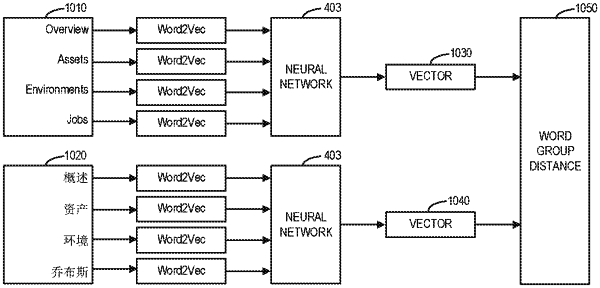| CPC G06F 40/58 (2020.01) [G06F 40/51 (2020.01); G06N 3/08 (2013.01)] | 20 Claims |

|
1. A computer-implemented method comprising:
obtaining, by one or more processors, a plurality of groups of training data, wherein each of the plurality of groups of training data comprises a plurality of words in a source language and translations of the plurality of words in a target language;
generating, by one or more processors, a plurality of data sets from the plurality of groups of training data, wherein the plurality of data sets comprises a first data set in the source language, a second data set in the source and target languages and a third data set in the target language;
training, by one or more processors, a neural network based on the plurality of data sets for determining an association degree among a group of words in the source or target language;
obtaining, by one or more processors, a group of words in the source language and translations of the group of words in the target language;
converting, by one or more processors, the group of words in the source language into a first word vector and inputting the first word vector to the trained neural network to generate a first vector indicating an association degree among the group of words in the source language;
converting, by one or more processors, the translations of the group of words in the target language into a second word vector and inputting the second word vector to the trained neural network to generate a second vector indicating an association degree among the translations of the group of words in the target language;
using the first vector and the second vector, determining, by one or more processors, a distance between the group of words in the source language and the translations of the group of words in the target language, wherein the distance is equal to a square of a difference between the first vector and the second vector;
in response to the distance between the group of words in the source language and the translations of the group of words in the target language exceeding a predetermined threshold, determining, by one or more processors, there is an error in the translations of the group of words; and
in response to determining that an error occurs in the translations of the group of words, generating, by one or more processors, a correct translation from a plurality of candidate translations determined using the trained neural network.
|